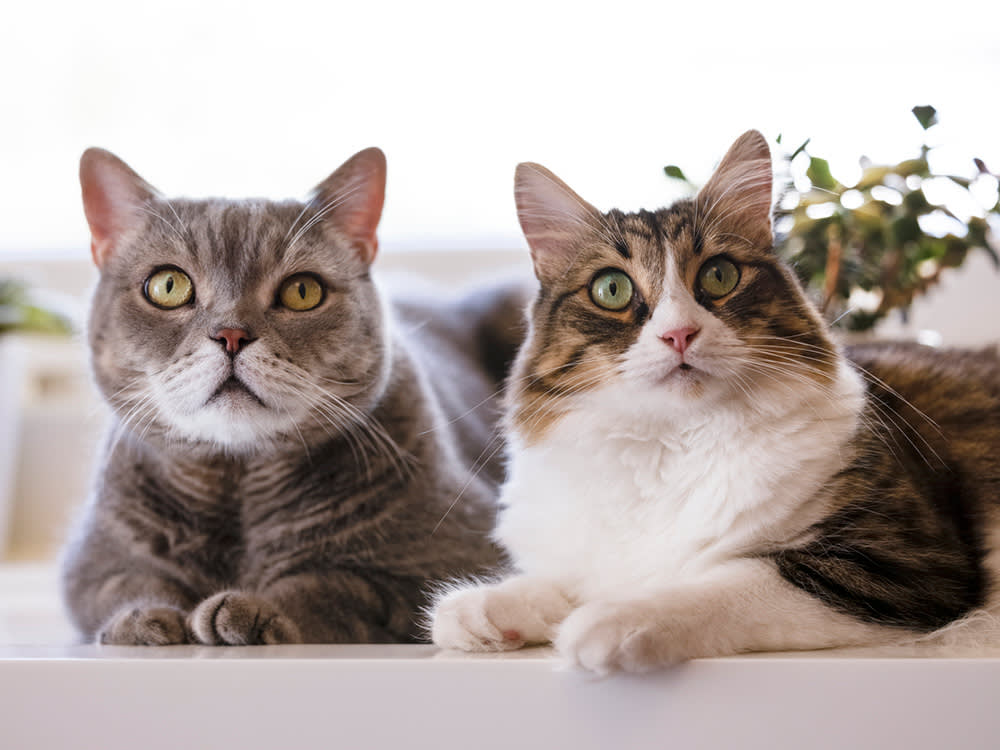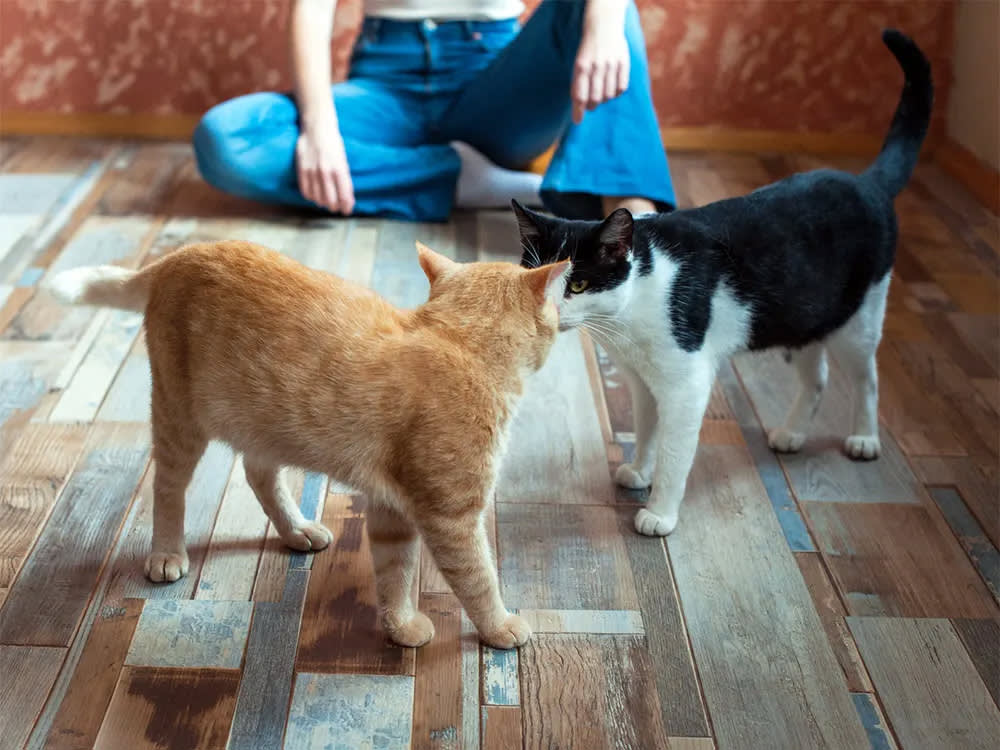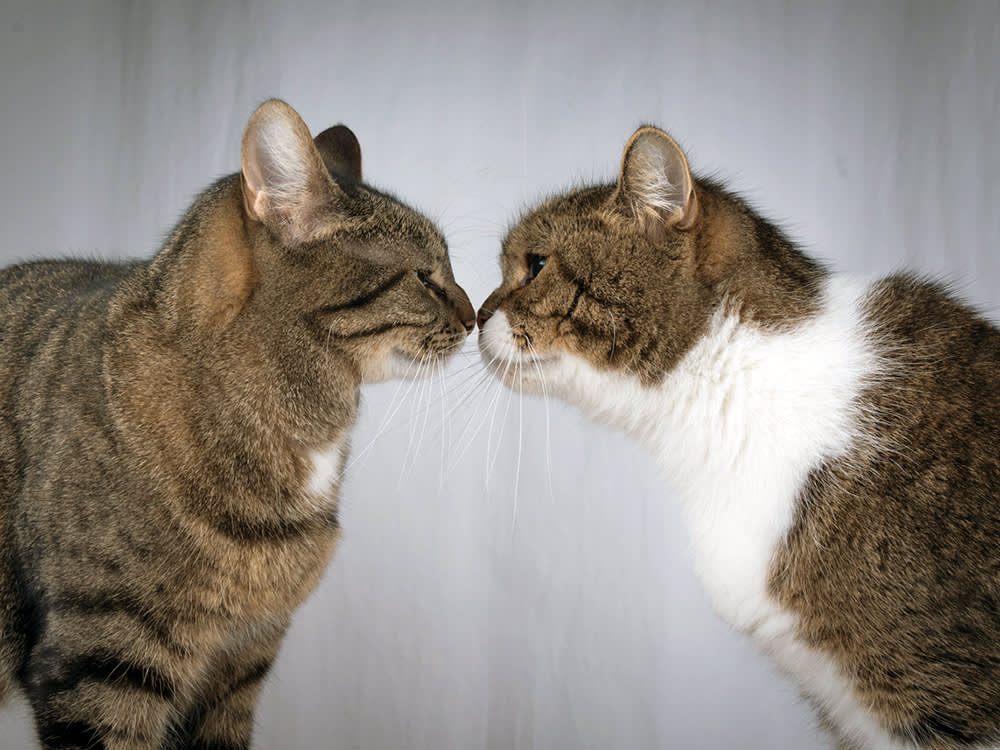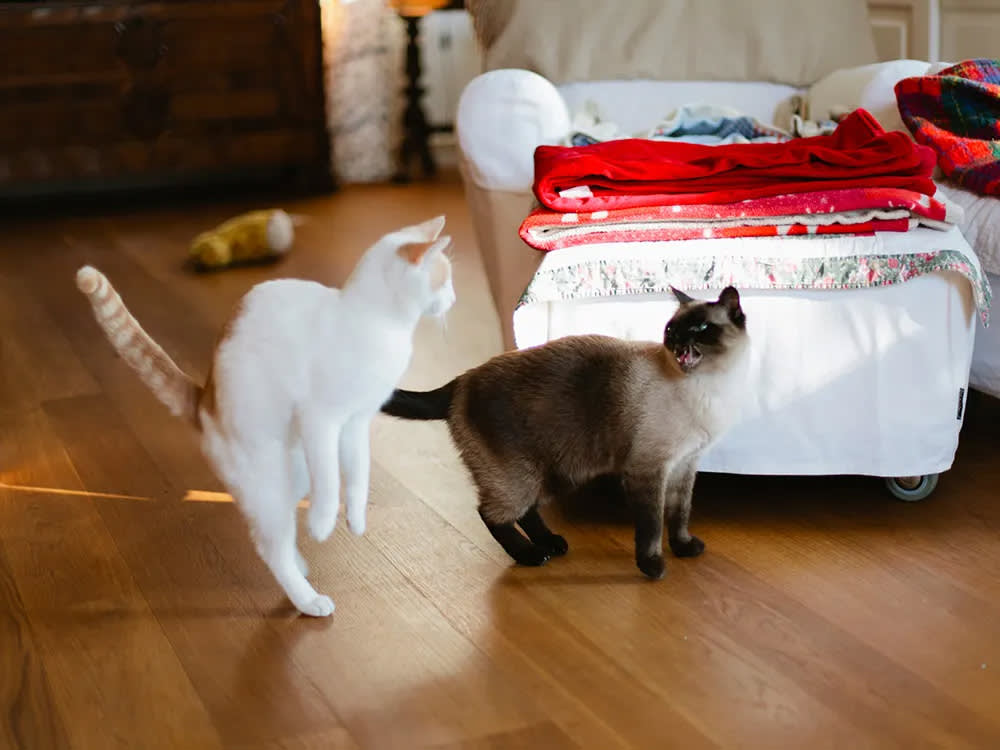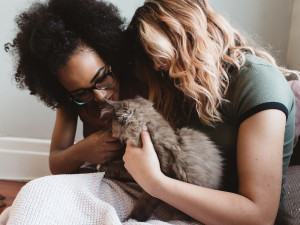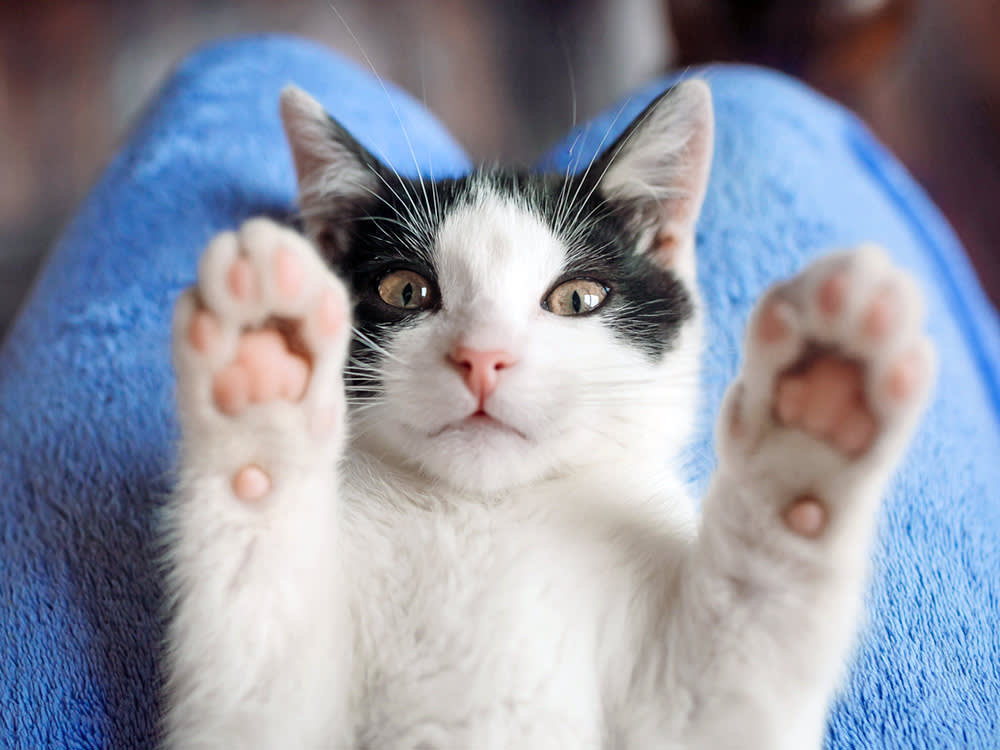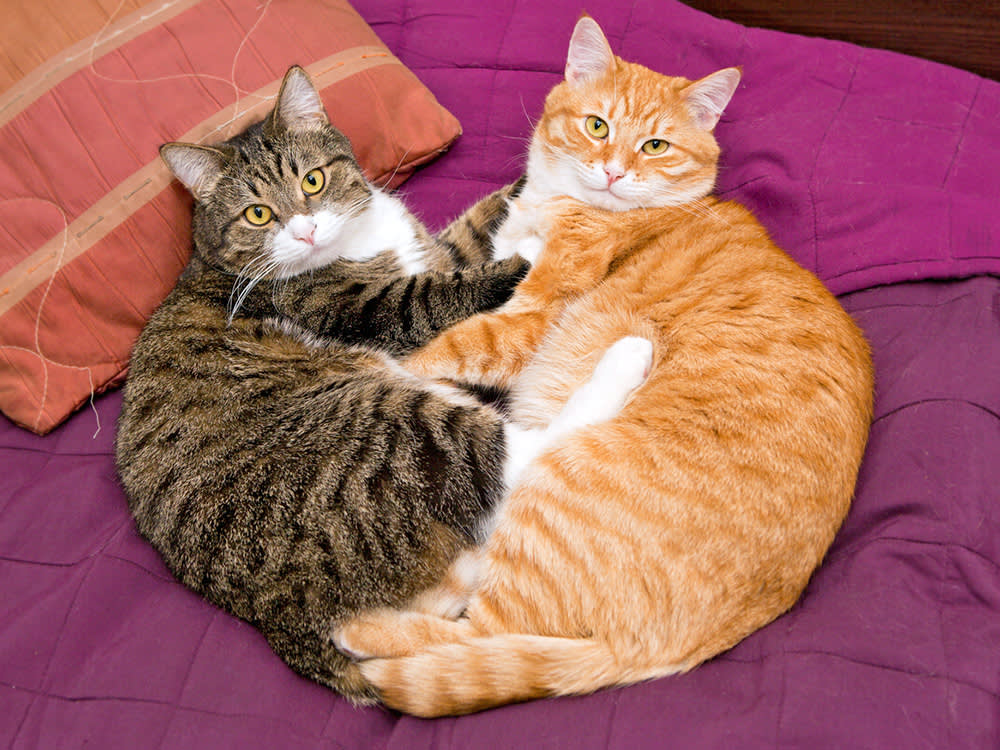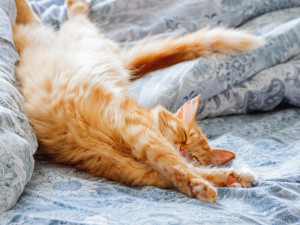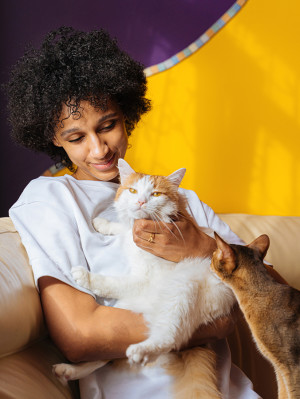How to Spot the Difference Between Male and Female Cats
There’s more to it than what you learned in health class.
In This Article:
The Main Differences Between Male and Female Cats Physical Differences Between Male and Female Cats Behavioral Differences Between Male and Female Cats Should I Spay or Neuter My Cat Regardless of Gender? Male vs. Female Cat Health Concerns What Research Has Been Done on Male vs. Female Cats? Should You Get a Male or Female Cat? Factors to Consider Frequently Asked Questions
If you are considering adopting a cat, you may be wondering about the differences between genders (and which combo makes for the best pairing in a household). There are some obvious differences between male and female cats, especially if they have not been spayed or neutered. These differences are primarily related to certain physical attributes.
When it comes to cats who have been spayed and neutered, these differences are harder to spot and, in many cases, may be almost non-existent. The truth is that there are very few generalizations that hold true for all cats of each gender, so it is always best to get to know the cat you are thinking of adopting and select the cat best suited to your personality and lifestyle.
Save on the litter with color-changing tech that helps you better care for your cat.
Read on to learn more about the differences between male and female cats.
How much do you spend on your pet per year?
The differences between male and female cats
The biggest differences between male and female cats are physical. To state the obvious, male cats have a penis, while female cats have a vagina. Physically, males tend to be larger and heavier, while females are often more petite. Males who are not neutered tend to have larger heads with big, full cheeks.
Behaviorally, male cats are reported to be more territorial and can show more aggression if they are not neutered. However, many other variables influence the behavior of cats, so it is not possible to differentiate between male and female cats based on their behaviors alone. '
Genitalia
External genitalia is the most obvious way to distinguish male and female cats. Intact males will have testicles that are easily seen under their tails. All male cats also have a penis that is visible externally, while female cats have a vagina. The distance between the anus and penis in male cats is greater than the distance between the anus and vulva in female cats. The overall shape of their external genitalia is also different, with males having a tubular-shaped penis that can be extruded by pressing gently on the surrounding skin.
Female cats who have had kittens tend to have enlarged mammary glands, with all the nipples on their belly becoming swollen and more visible, especially if they are actively lactating.
Face and body shape
Gender can also have an impact on a cat’s overall appearance. Intact male cats will have large, rounded heads with prominent jowls and larger overall bodies. Chubby cheeks develop after puberty and will linger in male cats who are neutered after reaching sexual maturity. Cats who are neutered early in life will not develop these large cheeks, however.
Color variations
Some coat colors are linked to gender. Orange coat color, calico, and tortoiseshell markings are linked to the X chromosome. Since males only inherit one X chromosome, if they have one copy of the gene for orange coat color on their X chromosome, they will be orange. Since females have two X chromosomes, they need to inherit two copies of this gene in order to be orange, and this is why there are more male orange cats than females. When female cats inherit only one copy of this gene, their coat will be some variation of tortoiseshell or calico. Nearly all tortoiseshell and calico cats are female since this requires two copies of the X chromosome.
Are female cats smaller than male cats?
Male and female cats who are intact tend to have more physical differences in their appearances. When cats are spayed and neutered before puberty, these differences tend to be minimal or even non-existent.
As a general rule, male cats tend to be larger and heavier than female cats. Breed and overall health also play a big role in their size, though. You can expect the average female Maine Coon to be much larger than a male Siamese, for example. Similarly, cats who have access to good preventative health care and adequate nutrition will grow much larger than stray cats who are getting by on whatever they can scavenge.
What are the behavioral differences between male and female cats?
The most consistent behavioral differences between male and female cats are influenced by their hormones and their drive to reproduce. Therefore, cats who are intact and live outdoors in colonies with other cats tend to have the most dramatic behavior differences between the genders. For cats who are spayed and neutered and live indoors, much of the drive for these reproductive behaviors disappears, limiting the influence of gender on their behavior.
Additionally, keep in mind that behavior and temperament are influenced by so many other factors aside from gender and are highly specific to each individual cat.
Territorial behavior
Intact male cats are known to be more territorial, with a tendency to roam and defend their territory. This leads to more fights between intact male cats and injuries from battle wounds as well as trauma from roaming outdoors, including hit-by-car accidents. Intact male cats are also more likely to spray urine as a way of marking their territory. Neutering your cat and keeping them indoors will reduce all of these behaviors significantly.
Playfulness
There are no documented gender differences in playfulness between male and female cats. This is a trait that is most influenced by an individual cat’s behavior, as well as how much they were socialized as kittens, and whether they have learned to play in the ways we are accustomed to.
Affection toward caregivers
This is also not a gender-based trait but is highly influenced by socialization and the age at which cats interact with humans. Cats who are handled by humans regularly in early kittenhood opens in new tab are most likely to show affection towards humans and engage in behaviors such as following them around, snuggling on the couch, and greeting their favorite humans at the door.
Gender only plays a role in that intact male cats tend to have more testosterone than other cats, which can make them behave more aggressively towards humans as well as other cats.
Mating and breeding behavior
Mating and breeding behaviors are highly influenced by sex hormones. Both male and female cats have a strong drive to reproduce. For intact males, this leads them to want to roam and search for mates, so they will often try to sneak out of the house to do so.
For intact female cats, their heat cycles can be very intense. This is when they are receptive to mating, leading them to be very vocal, needy, and also intent on sneaking out of the house to search for a mate. Spaying and neutering eliminates the bulk of these behaviors, especially if it is done earlier in life before cats reach sexual maturity.
Aggression
Intact male cats are more likely to be aggressive in their attempt to defend their territory. Intact male cats tend to fight with one another and some studies have reported intact male cats show more aggression towards people as well.
Spraying
Urine spraying is typically done by intact male cats as a way to mark their territory. However, both male and female cats can spray urine. Spraying indoors by spayed or neutered cats is often a sign of behavioral stress, such as competition between cats, anxiety, or medical problems.
Do female and male cats get along?
Regardless of gender, cats who grow up together are more likely to bond than cats introduced as adults. That doesn’t mean that adult cats can’t become friends, however. When introducing adult cats, those who have been spayed or neutered tend to get along much better than cats who are still intact. Hormones drive a lot of aggressive and undesirable behaviors.
If you’re considering adding another cat to the mix, just be sure to make a proper introduction.
Are male or female cats more affectionate?
There is no way to answer this question definitively. It has more to do with how you socialize your cat, as well as their individual personality.
Are male or female cats better hunters?
In the wild, female cats are tasked with hunting for their litter, so evolution may have had some paret in making them good mousers. But any cat can hunt, regardless of gender — especially now that cats are largely domesticated.
Are male cats friendlier than female cats?
Again, this has more to do with environment or individual personality. While some cat parents have made generalizations about cats’ demeanors, but it really comes down to your specific cat.
References
Barry, Kimberly J, et al. “Gender differences in the social behavior of the neutered indoor-only domestic catopens in new tab.” Applied Animal Behavior Science, vol. 64, no. 3, July 1999, pp. 193-211.
Bamberger, Michelle, et al. “Signalment factors, comorbidity, and trends in behavior diagnoses in cats: 736 cases (1991–2001)opens in new tab.” J Am Vet Med Assoc, vol. 229, no. 10, November 2006, pp. 1602-1606.
Bradshaw, John. “Sociality in cats: A comparative reviewopens in new tab.” Journal of Veterinary Behavior, vol. 11, 2016, pp. 113-124.
Koyasu, Hikari, et al. “Sociality of Cats toward Humans Can Be Influenced by Hormonal and Socio-Environmental Factors: Pilot Studyopens in new tab.” Animals, vol. 13, no. 1, 30 December 2022, pp. 146.
Merenda, Monica Estella Zambon, et al. “Growth Curve and Energy Intake in Male and Female Catsopens in new tab” Topics in Companion Animal Medicine, vol. 44, 2021.
Pitakarnnop, T, et al. “Feline (Felis catus) Skull and Pelvic Morphology and Morphometry: Gender-Related Difference?opens in new tab” Anatomy, Histology, Embryology, vol. 46, no. 3, June 2017, pp. 294-303.
